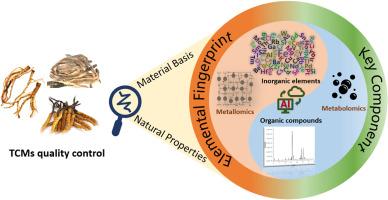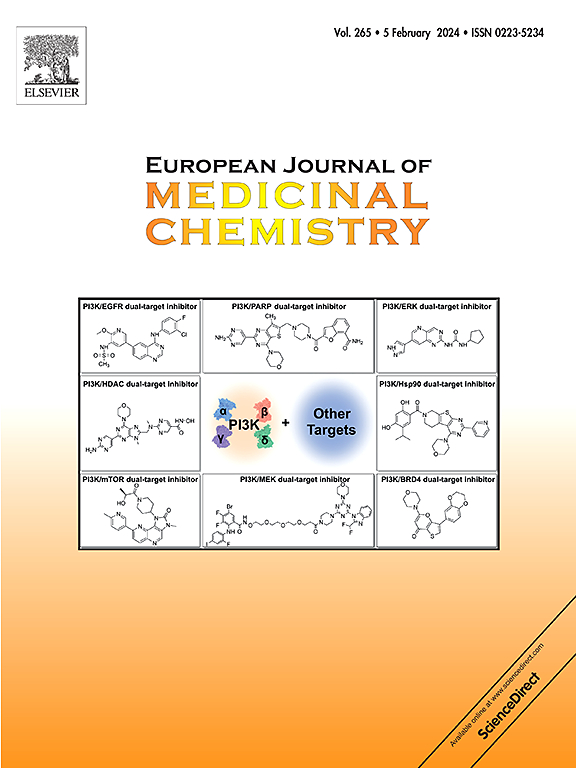New vision for TCM quality control: Elemental fingerprints and key ingredient combination strategy for identification and evaluation of TCMs
IF 6
2区 医学
Q1 CHEMISTRY, MEDICINAL
引用次数: 0
Abstract
The quality control of Traditional Chinese Medicine (TCM) is crucial for ensuring its efficacy and safety. Traditional methods, however, have limitations in fully capturing the natural essence of TCM, thus hindering the comprehensive exhibition of its authenticity. Addressing this challenge requires the establishment of a scientific and reasonable quality control system, which poses significant complexities due to the TCM unique attributes. Our research team conducted in-depth exploration of the elemental fingerprints of TCM, amassing a robust theoretical and practical foundation. In this review, we presented a comprehensive review of the core value, advanced technologies, and classic cases of elemental fingerprints. We introduced a novel perspective that integrated inorganic and organic components, overcoming traditional paradigms. The review analysis highlighted unique role of elemental fingerprints in revealing the scientific connotation of TCM. Furthermore, we proposed an innovative strategy for identifying key components, which effectively addressed the limitations of traditional methods and elevated the overall evaluation standards for TCM. This strategy was supported by emerging technologies such as artificial intelligence, metallomics, and hyperspectral imaging. Looking ahead, the application prospects of the combined strategy of elemental fingerprints and key components were promising. It not only provided a solid foundation for the formulation of TCM quality control strategies but also introduced new methodologies and tools to the field of regulatory science and scientific oversight of TCM.


中药质量控制的新视野:用于鉴定和评估中药的元素指纹图谱和关键成分组合策略
传统中药的质量控制对于确保其疗效和安全性至关重要。然而,传统方法在充分捕捉中药的自然本质方面存在局限性,从而阻碍了中药真伪的全面展示。要应对这一挑战,就必须建立科学合理的质量控制体系,而由于中药的独特属性,这就带来了极大的复杂性。我们的研究团队对中药的元素指纹进行了深入探索,积累了坚实的理论和实践基础。在这篇综述中,我们全面回顾了元素指纹图谱的核心价值、先进技术和经典案例。我们提出了一个新颖的视角,将无机成分和有机成分相结合,突破了传统范式。综述分析强调了元素指纹图谱在揭示中医药科学内涵方面的独特作用。此外,我们还提出了识别关键成分的创新策略,有效解决了传统方法的局限性,提升了中药的整体评价标准。这一策略得到了人工智能、金属组学和高光谱成像等新兴技术的支持。展望未来,元素指纹图谱与关键成分相结合的策略应用前景广阔。它不仅为制定中药质量控制策略奠定了坚实的基础,还为中药监管科学和科学监督领域引入了新的方法和工具。
本文章由计算机程序翻译,如有差异,请以英文原文为准。
求助全文
约1分钟内获得全文
求助全文
来源期刊
CiteScore
11.70
自引率
9.00%
发文量
863
审稿时长
29 days
期刊介绍:
The European Journal of Medicinal Chemistry is a global journal that publishes studies on all aspects of medicinal chemistry. It provides a medium for publication of original papers and also welcomes critical review papers.
A typical paper would report on the organic synthesis, characterization and pharmacological evaluation of compounds. Other topics of interest are drug design, QSAR, molecular modeling, drug-receptor interactions, molecular aspects of drug metabolism, prodrug synthesis and drug targeting. The journal expects manuscripts to present the rational for a study, provide insight into the design of compounds or understanding of mechanism, or clarify the targets.

 求助内容:
求助内容: 应助结果提醒方式:
应助结果提醒方式:


